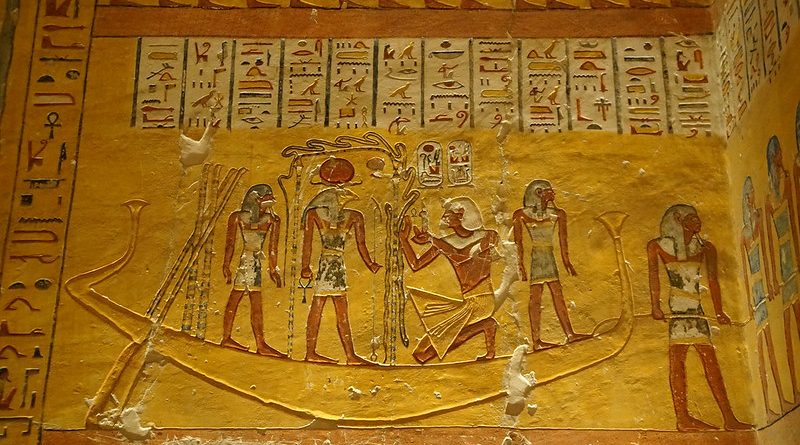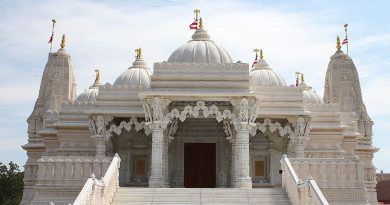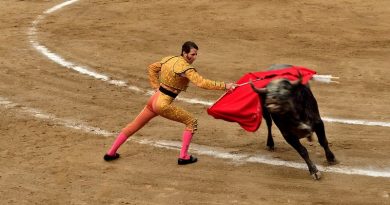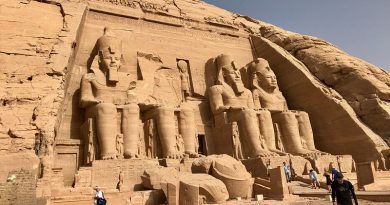The Valley of the Kings
History Facts
Where: Luxor, by the River Nile, central Egypt
When: 16th – 11th Century BC
History: Tomb stacked full of treasures from the Pharoh’s of the New Kingdom including Tutankamun, a fully preserved mummy
Go there for: Stunning ancient history and the mysteries of the earth’s greatest race – a real life Indiana Jones adventure
Where It’s At
Luxor is divided in half by the River Nile. The modern city is located on the East Bank, and the West Bank is home to the famous Valley of the Kings. After the Pyramids, it’s the most visited Pharaonic site in the whole of Egypt.
The valley is set back a mile from the riverbank, and is concealed from view by high cliffs and a long, winding entrance. It’s still a working archaeological site and new treasures are regularly discovered.
What happened here?
The Valley of the Kings was the burial site of the Egyptian rulers during the period of the New Kingdom (1570-1070 BC). More than 60 tombs have already been excavated: some are modest pits, others are vast complexes of chambers and corridors, originally decked out with precious possessions of the Pharaoh. Most of the tombs had already been plundered by the time they came to be properly excavated, and Greek and Latin graffiti indicates that some were even accessible in antiquity.
A few of the tombs, such as that of Tutankhamun, which was discovered in 1922, contained an incredible array of precious artefacts. There’s evidence that Tutankhamun’s Tomb had actually been plundered twice before, but as 5000 valuable items were recovered by archaeologists it appears that the robbers were disturbed before they could make off with most of the grave goods. Tutankhamun was a uniquely important discovery because the mummy of the young king was intact, positioned on the original funerary furniture. It gives us a detailed insight into the life and death of a Pharoah in the New Kingdom.
King Amenhotep I, who reigned from 1551-1524BC, departed from the tradition of locating his tomb within the valley and built his closer to the river, well hidden in the cliffs. His successors continued the tradition of positioning their tombs away from those of their predecessors, but they still remained within the valley. It’s likely that this practice of separation was a move to prevent the ransacking of their final resting places, possibly already a common practice in the New Kingdom.
In 1995, Shi’ite Muslims massacred fifty tourists who were visiting Luxor. The episode rocked the Egyptian tourist industry and economy, and although the tourist crowds have now returned to the Valley of the Kings, the Egyptian authorities have invested heavily in security at major tourist sites.
What’s there to see & do?
– Not all the tombs are open to tourists, and occasionally particular tombs are closed for restoration. Nonetheless, visitors can explore examples spanning the whole of the 500-year period of the New Kingdom. It’s interesting to note how burial practices and figurative art which decorated the interior of the tombs developed over time:
– Tuthmse III was buried at the far end of the East Valley and his tomb is one of the earliest. The oval shaped chamber is decorated with inscriptions and stick figures.
– Ramesses III‘s tomb contains the famous paintings of two blind harpists.
– Ramessess VI has a magnificent burial chamber, the ceiling of which is decorated with images of the sky goddess Nut swallowing and giving birth to the sun.
– Adjacent to Ramesses VI is the fantastically rich tomb of Tutankhamun, in which fine examples of rich artefacts and kingly possessions were preserved for centuries.
– A great way to get an overview of the entire site is to take trip in a hot air balloon at dawn. It is expensive, but an aerial view ancient burial ground and flight across the Nile is a unique experience.
MORE INFORMATION
Virtual Egypt
Great site with news, pictures and Egypt related interactive fun for the enthusiast.
Books
The Complete Valley of the Kings, Nicholas Reeves, Richard H. Wilkinson
Thames and Hudson, Published 1996
By Dave Lowe




